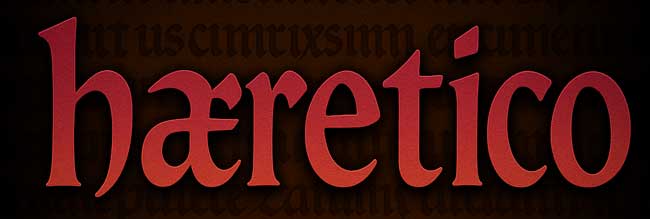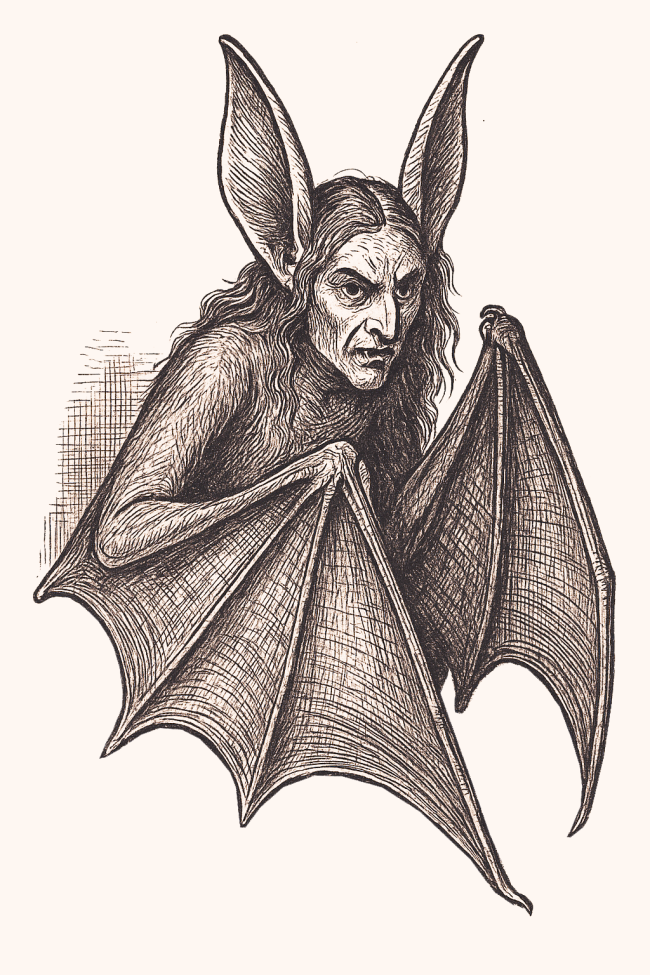Written by David Caldwell ·
The Ancient Blood: A History of the Vampire
I. Shadows from the East - Babylon, Assyria, and the Birth of the Undead
Long before the vampire took human form in European folklore, the idea of life drained from the living by a revenant or spirit was already ancient. In Babylonian and Assyrian belief, darkness itself was populated by ravenous entities - the Utukku, Ekimmu, and Lilu - spirits of those denied proper burial, who returned to torment the living. These were not metaphorical ghosts, but physical presences thought to cause fever, wasting, and nightmares. Among them, the female demon Lamashtu fed upon infants and pregnant women, while the seductive Lilitu - later transformed into the Jewish Lilith - haunted men by night, stealing vitality through lust and dreams.
The vampire’s essence is already here: a spirit half-human, half-divine, that feeds upon blood or life-force. In the Assyrian mind, blood was not merely a symbol of vitality; it was the soul itself, the breath of existence. When that was drained, one’s essence passed to the predator.
Such demons were not slain by holy water or stakes but by ritual magic and offerings. Priests of Ishtar performed apotropaic rites with clay amulets depicting the monster restrained, inscribed with curses to “bind the devourer of blood.” It was a battle not of faith but of sympathetic magic - a pattern that would echo in the charms and rituals of later peasant Europe.
II. Greece and the Classical World - The Lamia and the Empusa
When the Greeks encountered the East, they absorbed and reinterpreted its horrors. The Lamia - said to be a Libyan queen cursed by Hera - became a child-devouring demon who drained her victims’ blood. Her name would endure into the Renaissance as a synonym for vampire. Likewise, the Empusa, a servant of Hecate, was described by Aristophanes as a shapeshifting ghoul with one brass leg and one of a donkey, luring young men to their deaths.
To the Greeks, these creatures embodied both moral warning and metaphysical dread - women punished for lust or impiety, yet also symbols of divine vengeance. The belief in kakodaimones, or evil spirits inhabiting corpses, gave rise to the idea that the dead could walk again. Greek graves were sometimes weighed down with stones to prevent revenants from escaping - an archaeological fact that foreshadows Slavic vampire burials centuries later.
The philosopher Philostratus, in his Life of Apollonius of Tyana, recounts a tale of a young man betrothed to a woman later revealed to be an Empusa. She confessed to feeding on human blood before vanishing - an early narrative ancestor of the seductive vampire bride of Gothic fiction.
III. Rome - The Strix and the Blood of Infants
Roman superstition inherited these terrors and gave them form. The Strix, described by Ovid and later by Petronius, was a nocturnal bird or woman that fed on infants’ flesh and blood. The word survives in “strix” (screech-owl), but the horror it inspired was entirely human.
Pliny the Elder dismissed such tales as delusions, but they endured among the people. Roman mothers hung charms to ward off the strix, and fragments of lead tablets inscribed with counter-curses have been found in graves across Italy.
The Strix was more than a monster; she was an omen of death. Like her Greek and Babylonian ancestors, she embodied the fear of premature death, disease, and contagion - the vampire’s earliest psychological soil.
In the late Empire, with Christianity’s rise, such beings were reframed as demons or witches - servants of Satan who fed on human vitality. The early Church, while dismissing pagan gods as mere idols, accepted the reality of demonic possession, leaving space for the vampire’s rebirth within Christian theology.
IV. The Northern Cold - Iceland and the Draugr
Far from the Mediterranean, a parallel tradition took root among the Norse. In Icelandic sagas, the Draugr - literally “the revenant” - was a corpse that refused to stay dead. Unlike the spectral ghosts of classical myth, the Draugr was corporeal, animated by hatred and greed, often guarding treasure or seeking vengeance.
The Eyrbyggja Saga and Grettis Saga describe these beings in vivid detail: swollen, blue-black corpses that exhaled foul breath and crushed men with superhuman strength. Their appearance mirrors that of bodies in early decomposition, and the Icelandic term draugr blár (“blue draugr”) may be the origin of the later image of the blood-swollen vampire.
Only burning or decapitation could end their plague. Clerics later Christianised these sagas, but the fear remained real - graves in Iceland and Scandinavia have been found with stones pinning the corpses, echoing the same defensive rites as in Greece, Wallachia, and Poland.
The Draugr embodies an older, more brutal archetype: not the suave nobleman of Gothic romance, but the animated corpse of the cold earth, the hunger of the tomb itself.
II. The Age of Panic - Vampires in Eastern Europe
If the roots of the vampire lay in Babylon and Greece, its flowering took place amid the superstitions of Eastern Europe. The word vampire entered Western languages in the early 18th century - borne not by folklore, but by official reports of real exhumations and inquisitions.
The Case of Medreyga (1732)
In January 1732, letters from the Austrian frontier carried news from a small village in Medreyga, Hungary. It was reported - and reprinted across Europe, including in The Kentish Weekly Post - that certain “dead bodies, call’d here Vampyres,” had killed several persons by sucking out all their blood.
The investigation centred on Arnold Paul, said to have been crushed under a cartload of hay five years before. In life, Paul had claimed to have been tormented by a vampire near Cassova, and to have “rubbed himself with their blood” to escape the curse. After his death, villagers swore they heard him walking by night. Within weeks, people fell sick and died - prompting the authorities to exhume the body forty days after burial. To their horror, the corpse was found fresh, the skin uncorrupted, and blood flowing from the mouth and ears. Following local custom, a stake was driven through his heart; he “gave a horrid groan, and lost a great deal of blood.” The body was then burnt, and the ashes thrown into the grave.
The Vampire of Kamenice (1738)
Just a few years later, another wave of reports surfaced from Podolia, in what is now Ukraine and Poland. The Newcastle Courant and Kentish Weekly Post both published letters describing a mysterious epidemic that locals blamed on Vampyres. In the Palatinate of Kamenice, forty-seven people died within three weeks. Villagers claimed to hear scratching from graves and to see shapes moving at night. They exhumed the dead, cut off their heads, and burned them - yet still the deaths continued.
Science, Skepticism, and State Inquiry
These panics drew the attention of physicians, theologians, and military officials. The Austrian Empress Maria Theresa, alarmed by repeated vampire trials, sent her physician Gerard van Swieten to investigate. He concluded in 1755 that decomposition and ignorance explained all supposed signs of vampirism. His rationalism led to an imperial decree forbidding mutilation of corpses. Yet his report only deepened the fascination, making the vampire a subject of medical and philosophical debate.
Vampirism in the Press - From Fact to Folklore
By the 19th century, newspapers across Europe still published reports of “vampires” and “bloodsuckers,” but the tone shifted. In the Ashton Reporter (1871), a Polish case describes a nobleman exhumed and his blood drunk by villagers seeking to cure disease. The Birmingham Morning News (1871) discussed vampires alongside ghouls, tracing their lineage back to Babylon and Assyria. By 1890, the Wexford People was discussing vampire bats alongside tales of human bloodsuckers. Even in the 20th century, echoes of the old fear endured, such as the Bedfordshire Times in 1936 describing a vampire woman responsible for a hundred deaths.
III. From Graves to Gothic - The Rise of the Modern Vampire
By the close of the 18th century, the vampire had travelled far from the Balkan graveyard. What had once been a peasant superstition became the obsession of poets, scholars, and moralists. To the Enlightenment, vampires were an embarrassment; to the Romantics, they were irresistible.
The Romantic Resurrection
The transformation began in the literary circles of Lord Byron, where death and decadence were fashionable. In 1816, amid the storms over Lake Geneva, Byron’s physician John Polidori conceived The Vampyre - published in 1819. Polidori’s tale introduced the first aristocratic vampire, the suave and cold Lord Ruthven, modelled on Byron himself. Gone was the peasant corpse; in its place stood a seductive nobleman moving easily through high society.
The Age of Gothic Seduction
Through the 19th century, the vampire became a vessel for exploring forbidden themes - sex, death, and religion. In Sheridan Le Fanu’s Carmilla (1872), the predator was female: an alluring woman preying upon her innocent female companion. Set in the decaying castles of Styria, Carmilla introduced both the eroticism and melancholy that would define the vampire myth henceforth.
Bram Stoker and the Codification of the Vampire
In 1897, Bram Stoker’s Dracula gave the vampire its definitive mythology. Count Dracula was both nobleman and parasite of empire - an ancient predator invading modern London. Stoker fused folklore and science: the stake through the heart, aversion to sunlight, and transfusion of blood. The vampire became intimate - not a distant superstition, but a threat within the home and bloodstream. In an age of tuberculosis and syphilis, it reflected fears of infection, sexuality, and loss of control.
The Vampire Expands East and West
While Europe’s fascination deepened, tales of blood-sucking spirits thrived elsewhere. In China, the jiangshi or “hopping vampire” drained life-force. In India, the vet?la haunted corpses. In the Philippines, the aswang combined vampire and witch; in Malaysia, the penanggalan was a flying female head trailing entrails. Each region shaped the myth to its own fears - disease, hunger, impurity - yet the core idea was identical: the dead could rise, feed, and spread their condition.
The Vampire as Psychology and Symbol
By the 20th century, the vampire became a metaphor for repressed hunger, addiction, and eroticism. Newspapers occasionally echoed old fears, such as the Bedfordshire Times (1936) describing a vampire woman responsible for many deaths. Even after Darwin and Freud, the vampire endured as something that could not be fully explained away.
Epilogue - The Eternal Return
The vampire today glitters on cinema screens and haunts our language - “energy vampires,” “corporate bloodsuckers.” From Babylonian demons to Bram Stoker’s Count, the vampire reflects humanity’s deepest hunger: to live forever, even at the cost of another’s life.
Related Articles
27 September 2025
Epona: The Horse Goddess in Britain and Beyond26 September 2025
Witchcraft is Priestcraft: Jane Wenham and the End of England’s Witches20 September 2025
The Origins of Easter: From Ishtar and Passover to Eggs and the Bunny12 September 2025
Saint Cuthbert: Life, Death & Legacy of Lindisfarne’s Saint7 September 2025
The Search for the Ark of the Covenant: From Egypt to Ethiopia5 September 2025
The Search for Camelot: Legend, Theories, and Evidence1 September 2025
The Hell Hound Legends of Britain25 August 2025
The Lore of the Unicorn - A Definitive Guide23 August 2025
Saint Edmund: King, Martyr, and the Making of a Cult14 August 2025
The Great Serpent of Sea and Lake11 August 2025
The Dog Days of Summer - meanings and origins24 June 2025
The Evolution of Guardian Angels19 June 2025
Dumnonia The Sea Kingdom of the West17 June 2025
The Roman Calendar, Timekeeping in Ancient Rome14 June 2025
Are There Only Male Angels?
